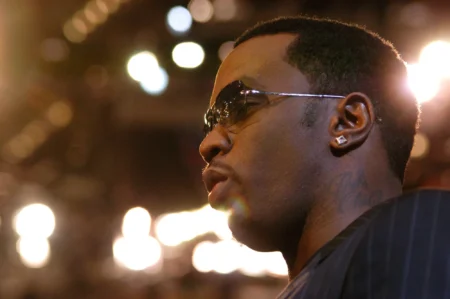The Black Lives Matter Plaza mural in Washington, D.C., which symbolized a pivotal moment in the fight for racial justice, has now been dismantled, and actor Jamie Foxx is among those expressing frustration over the decision. The mural, painted in June 2020 during widespread protests following the murder of George Floyd, was initially seen as a powerful statement of solidarity and a sign of progress for Black American social efforts. However, the recent destruction of the mural, under political pressure from the White House, has many feeling like a significant step backward.
The Significance of Black Lives Matter Plaza
The Black Lives Matter Plaza mural, located in front of the White House, was one of the most prominent symbols of the global movement advocating for racial equality and police reform. In the summer of 2020, as protests erupted across the nation in response to George Floyd’s tragic death, the mural served as a visual representation of the calls for justice. It became an international landmark, and many believed the artwork would stand as a permanent reminder of the Black Lives Matter movement’s significance in American history.
The effort to create Black Lives Matter Plaza was a historic collaboration between activists and local authorities, reflecting the public’s demand for systemic change. It was an emotional victory for those fighting for justice, a clear symbol of the movement’s reach, and its power to effect change on a national scale.
Jamie Foxx Speaks Out
Jamie Foxx, a vocal advocate for social justice and racial equality, took to social media to express his disappointment with the dismantling of the mural. In a comment on The Neighborhood Talk’s Instagram post, Foxx described the destruction of Black Lives Matter Plaza as a “drag.” His comment resonated with many who had hoped that the mural would serve as a lasting tribute to the fight for racial justice.
In an era where movements like Black Lives Matter have become central to national discussions about race, inequality, and police brutality, Foxx’s statement highlights the deep emotional connection many feel toward these symbols. The mural wasn’t just art; it represented a battle for equality, a visual declaration of the power of grassroots activism, and a significant cultural milestone in America’s ongoing conversation about race.
The Dismantling of the Mural
Washington, D.C. Mayor Muriel Bowser is facing significant political pressure regarding the mural’s destruction. The cleanup process for the mural began earlier this week after reports surfaced that the White House had pushed for the mural’s removal. Mayor Bowser, who was initially instrumental in getting the mural created, now finds herself caught in the crossfire of the debate over the future of Black Lives Matter Plaza.
The mural’s removal follows the introduction of a bill by Georgia Representative Andrew Clyde, which seeks to rename Black Lives Matter Plaza to “Liberty Plaza.” The proposed legislation, which has caused considerable controversy, could also result in the loss of federal funding for the district if passed. In response, Bowser criticized Clyde’s actions as “meaningless congressional interference,” highlighting the tension between local activism and federal political influence.
The Cost of Removal
The removal of the mural isn’t just an emotional blow to the movement but also a financial one. The cleanup job is expected to cost around $610,000 and will take up to two months to complete. This substantial investment in dismantling the mural has further fueled outrage among those who believe the money could have been better spent supporting ongoing social justice efforts.
A Symbol of Setback
For many, the destruction of the mural feels like a step back in the fight for racial equality. The Black Lives Matter movement has faced continuous resistance, and the removal of a symbol that was hard-earned during a historic summer of activism only deepens the sense of frustration. Activists and supporters of the movement argue that dismantling the mural sends the wrong message at a time when calls for systemic reform are more urgent than ever.
Moving Forward
The debate over the Black Lives Matter Plaza mural is just one chapter in the broader struggle for racial justice in America. While the mural may no longer be a visible symbol in D.C., the work of the Black Lives Matter movement continues. Leaders and activists remain dedicated to fighting for equality, holding those in power accountable, and ensuring that the voices of marginalized communities are heard.
For Jamie Foxx, the removal of the mural is not just an aesthetic loss; it represents a setback in a long-standing fight for social change. But as the debate rages on, many will continue to stand firm in their belief that the spirit of the Black Lives Matter movement cannot be erased, no matter the political maneuvering or symbolic gestures.








